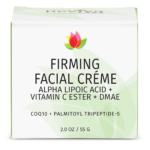Camphor Oil
Camphor is a wax-like, fragrant material obtained from the wood of Cinnamomum camphora, an evergreen tree native to Asia. This terpene (organic compound) is frequently utilized in creams, ointments, and lotions. Camphor oil is gathered from the wood of camphor trees and processed through steam distillation. It is efficacious in relieving pain, irritation, and itching when applied externally. In addition, camphor is used to ameliorate chest congestion and inflammatory issues. It has a potent smell and taste and is capable of being quickly absorbed by the skin. Currently, camphor is made out of turpentine, but it is still safe provided it is employed in the right manner. Although, it may cause unwanted effects if taken in large doses. Never consume camphor internally or apply it to damaged skin, as it can be poisonous.
Camphor (/ˈkæmfər/) is a waxy, colorless solid with a strong aroma. It is classified as a terpenoid and a cyclic ketone. It is found in the wood of the camphor laurel (Cinnamomum camphora), a large evergreen tree found in East Asia; and in the kapur tree (Dryobalanops sp.), a tall timber tree from South East Asia. It also occurs in some other related trees in the laurel family, notably Ocotea usambarensis. Rosemary leaves (Rosmarinus officinalis) contain 0.05 to 0.5% camphor, while camphorweed (Heterotheca) contains some 5%. A major source of camphor in Asia is camphor basil (the parent of African blue basil). Camphor can also be synthetically produced from oil of turpentine.
 (+)- and (−)-camphor
| |

| |
| Names | |
|---|---|
| IUPAC name
1,7,7-Trimethylbicyclo[2.2.1]heptan-2-one
| |
| Other names
2-Bornanone; Bornan-2-one; 2-Camphanone; Formosa
| |
| Identifiers | |
3D model (JSmol)
|
|
| 3DMet | |
| 1907611 | |
| ChEBI | |
| ChEMBL | |
| ChemSpider | |
| DrugBank | |
| ECHA InfoCard | 100.000.860 |
| EC Number |
|
| 83275 | |
| KEGG | |
| MeSH | Camphor |
PubChem CID
|
|
| RTECS number |
|
| UNII |
|
| UN number | 2717 |
CompTox Dashboard (EPA)
|
|
| |
| |
| Properties | |
| C10H16O | |
| Molar mass | 152.237 g·mol−1 |
| Appearance | White, translucent crystals |
| Odor | Fragrant and penetrating |
| Density | 0.992 g·cm−3 |
| Melting point | 175–177 °C (347–351 °F; 448–450 K) |
| Boiling point | 209 °C (408 °F; 482 K) |
| 1.2 g·dm−3 | |
| Solubility in acetone | ~2500 g·dm−3 |
| Solubility in acetic acid | ~2000 g·dm−3 |
| Solubility in diethyl ether | ~2000 g·dm−3 |
| Solubility in chloroform | ~1000 g·dm−3 |
| Solubility in ethanol | ~1000 g·dm−3 |
| log P | 2.089 |
| Vapor pressure | 4 mmHg (at 70 °C) |
Chiral rotation ([α]D)
|
+44.1° |
| −103×10−6 cm3/mol | |
| Pharmacology | |
| C01EB02 (WHO) | |
| Hazards | |
| GHS labelling: | |
  
| |
| Warning | |
| H228, H302, H332, H371 | |
| P210, P240, P241, P260, P261, P264, P270, P271, P280, P301+P312, P304+P312, P304+P340, P309+P311, P312, P330, P370+P378, P405, P501 | |
| NFPA 704 (fire diamond) | |
| Flash point | 54 °C (129 °F; 327 K) |
| 466 °C (871 °F; 739 K) | |
| Explosive limits | 0.6–3.5% |
| Lethal dose or concentration (LD, LC): | |
LD50 (median dose)
|
1310 mg/kg (oral, mouse) |
LDLo (lowest published)
|
800 mg/kg (dog, oral) 2000 mg/kg (rabbit, oral) |
LCLo (lowest published)
|
400 mg/m3 (mouse, 3 hr) |
| NIOSH (US health exposure limits): | |
PEL (Permissible)
|
TWA 2 mg/m3 |
REL (Recommended)
|
TWA 2 mg/m3 |
IDLH (Immediate danger)
|
200 mg/m3 |
| Related compounds | |
Related Ketones
|
Fenchone, Thujone |
Related compounds
|
Camphene, Pinene, Borneol, Isoborneol, Camphorsulfonic acid |
Except where otherwise noted, data are given for materials in their standard state (at 25 °C [77 °F], 100 kPa).
| |
The compound is chiral, existing in two possible enantiomers as shown in the structural diagrams. The structure on the left is the naturally occurring (+)-camphor ((1R,4R)-bornan-2-one), while its mirror image shown on the right is the (−)-camphor ((1S,4S)-bornan-2-one). Camphor has few uses but is of historic significance as a compound that is readily purified from natural sources.










